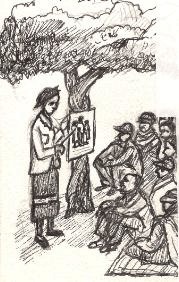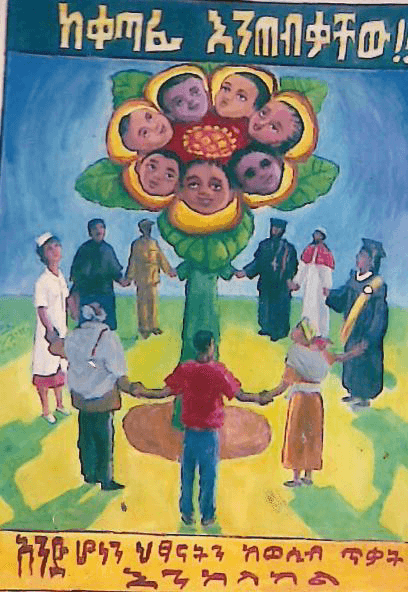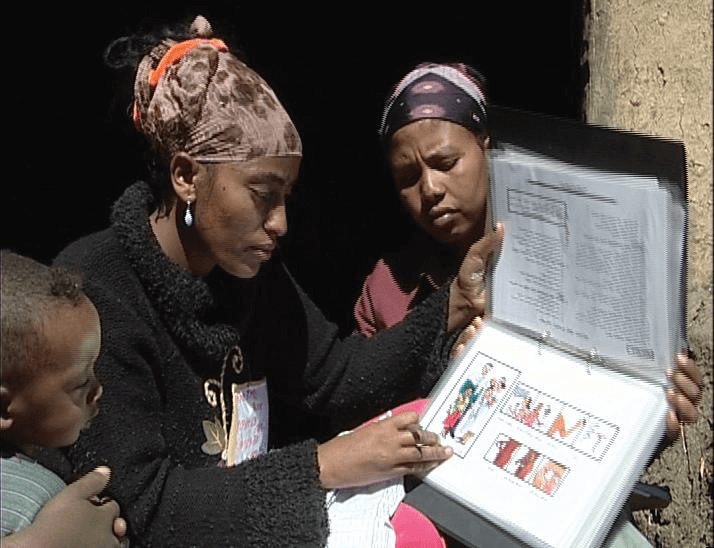
Teaching materials include all materials that are used as teaching aids to support the communication process and bring desired effects on the audience. These are important aids needed to facilitate the health education teaching-learning process. And they can be broadly classified into four categories: printed materials, visual materials, audio and audiovisual materials.
Printed materials: Examples of printed materials include posters, leaflets and flipcharts
a) Posters-- A poster is a large sheet of paper with words and pictures or symbols that put across a message. It is widely used by commercial firms for advertising products, but can also be used for preventive purposes. Since a poster consists of pictures or symbols and words, it communicates health messages both to literate and illiterate people. They should be posted where many people can see them when passing by - market areas, meeting halls, etc.

Purpose of Posters
Posters are reminders that means, posters can serve us to remind important events and programs such as 'World children's Day' (Figure 7.6 blow)

Standard Rules in Making Posters
General Principles to Use Posters
B) Leaflets. These teaching materials are prepared with a simple language containing both short sentences and illustrations (pictures or simple drawings). Leaflets are more appropriate for those you can read. Some people are too shy to ask advice so that they simply pick-up a leaflet and read it. Leaflets are also reminders and are helpful for some sensitive health education like health education on sexuality.
Although, they need educational experience written words have the advantage to be distributed to the audience so that they read and understand them at their convenient times.
C) Flipchart. A flipchart is made up of a small number of posters that are meant to be shown one after the other. In this way, several steps or aspects of a central topic can be presented such as about family planning procedures (Figure 7.5)

When you use the flip chart in health education, you must discuss each page completely before you turn to the next and then make sure that everyone understands each message.
Visual Materials
Visual elements are something seen (apart from written words) E.g. poster. Visual materials are one of the strongest methods of communicating health education messages, particularly when literacy is low amongst the population.
Photographs or picture and other real objects are immediate and powerful where people can see and even touch them. For example: if your health education/demonstration is on "family planning methods", display real contraceptives, such as pills, condoms, diaphragms, and foams. If your display is on weaning foods, display the real foods and the equipment used to prepare them.
The following are among the outstanding characteristics of visuals.
Audio Materials
As the name indicates it is anything that can be heard such as the spoken word (health talk) or music. Radio and audio cassettes are good examples of audio aids. Health talks are the most commonly used audio teaching methods.Health talks have been, and remain, the most common way to share health knowledge and facts.
In Preparing a Health Talk, Consider the Following Points:
Audio-Visual Materials
They combine both seeing and listening. These materials include TV, films or videos which provide a wide range of interest and can convey messages with a high motivational appeal.